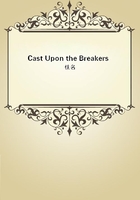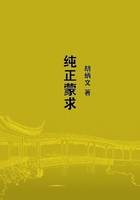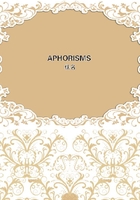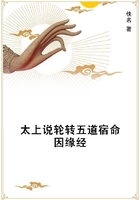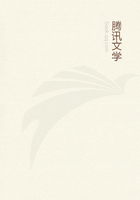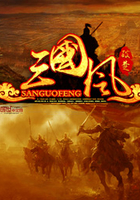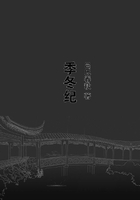Thus, Motion is conditioned, not only by the objects in which it occurs, but also by its origins and its course, and it is a distinctive mark of Motion to be always qualified and to take its quality from the moved.
24.With regard to locomotion: if ascending is to be held contrary to descending, and circular motion different [in kind] from motion in a straight line, we may ask how this difference is to be defined-the difference, for example, between throwing over the head and under the feet.
The driving power is one- though indeed it might be maintained that the upward drive is different from the downward, and the downward passage of a different character from the upward, especially if it be a natural motion, in which case the up-motion constitutes lightness, the down-motion heaviness.
But in all these motions alike there is the common tendency to seek an appointed place, and in this tendency we seem to have the differentia which separates locomotion from the other species.
As for motion in a circle and motion in a straight line, if the former is in practice indistinguishable from the latter, how can we regard them as different? The only difference lies in the shape of the course, unless the view be taken that circular motion is "impure,"as not being entirely a motion, not involving a complete surrender of identity.
However, it appears in general that locomotion is a definite unity, taking its differences from externals.
25.The nature of integration and disintegrations calls for scrutiny.Are they different from the motions above mentioned, from coming-to-be and passing-away, from growth and decay, from change of place and from alteration? or must they be referred to these? or, again, must some of these be regarded as types of integration and disintegration?
If integration implies that one element proceeds towards another, implies in short an approach, and disintegration, on the other hand, a retreat into the background, such motions may be termed local; we have clearly a case of two things moving in the direction of unity, or else making away from each other.
If however the things achieve a sort of fusion, mixture, blending, and if a unity comes into being, not when the process of combination is already complete, but in the very act of combining, to which of our specified motions shall we refer this type? There will certainly be locomotion at first, but it will be succeeded by something different; just as in growth locomotion is found at the outset, though later it is supplanted by quantitative motion.The present case is similar: locomotion leads the way, but integration or disintegration does not inevitably follow; integration takes place only when the impinging elements become intertwined, disintegration only when they are rent asunder by the contact.
On the other hand, it often happens that locomotion follows disintegration, or else occurs simultaneously, though the experience of the disintegrated is not conceived in terms of locomotion: so too in integration a distinct experience, a distinct unification, accompanies the locomotion and remains separate from it.
Are we then to posit a new species for these two motions, adding to them, perhaps, alteration? A thing is altered by becoming dense- in other words, by integration; it is altered again by being rarefied-that is, by disintegration.When wine and water are mixed, something is produced different from either of the pre-existing elements:
thus, integration takes place, resulting in alteration.
But perhaps we should recall a previous distinction, and while holding that integrations and disintegrations precede alterations, should maintain that alterations are nonetheless distinct from either;that, further, not every alteration is of this type [presupposing, that is to say, integration or disintegration], and, in particular, rarefication and condensation are not identical with disintegration and integration, nor in any sense derived from them: to suppose that they were would involve the admission of a vacuum.
Again, can we use integration and disintegration to explain blackness and whiteness? But to doubt the independent existence of these qualities means that, beginning with colours, we may end by annihilating almost all qualities, or rather all without exception;for if we identify every alteration, or qualitative change, with integration and disintegration, we allow nothing whatever to come into existence; the same elements persist, nearer or farther apart.
Finally, how is it possible to class learning and being taught as integrations?
26.We may now take the various specific types of Motion, such as locomotion, and once again enquire for each one whether it is not to be divided on the basis of direction, up, down, straight, circular-a question already raised; whether the organic motion should be distinguished from the inorganic- they are clearly not alike; whether, again, organic motions should be subdivided into walking, swimming and flight.
Perhaps we should also distinguish, in each species, natural from unnatural motions: this distinction would however imply that motions have differences which are not external.It may indeed be the case that motions create these differences and cannot exist without them; but Nature may be supposed to be the ultimate source of motions and differences alike.
Motions may also be classed as natural, artificial and purposive: "natural" embracing growth and decay; "artificial"architecture and shipbuilding; "purposive" enquiry, learning, government, and, in general, all speech and action.
Again, with regard to growth, alteration and birth, the division may proceed from the natural and unnatural, or, speaking generally, from the characters of the moved objects.


